
Let’s get this out of the way. I didn’t play Death end re;Quest and this is my first introduction to the series. Usually that’s an issue with a sequel, but fortunately, Death end re;Quest 2 isn’t a direct sequel, though it does feature characters from the first game. As a new initiate into the world of Death end re;Quest, I may miss a few things that relate to the first game, but rest assured, there’s no need to play the first game to understand what’s going on here!

Death end re;Quest 2, from fantastic companies Compile Heart and Idea Factory is, of course, a sequel. It is a stand-alone combination of visual novel and turn-based JRPG elements, and right from the get go, you know you’re in for something very different. In fact, it’s probably important to note that the introduction of Death end re;Quest 2 is one of the most disturbing opening sequences I’ve ever seen. Thematically, it delves deep into domestic violence and should likely carry a trigger warning for anyone who’s had to deal with those issues. It’s traumatic, visceral, and downright disturbing. Even though not everything is shown, the sound effects are more than enough to give you the creeps.

While the beginning of Death end re;Quest 2 starts out as pure horror, it quickly shifts into a lengthy and more standard visual novel with far less flair. The introductory visual novel section is quite long and a bit slow, and such a radical shift from the beginning that it almost feels like a different game. Our protagonist, Mai, ends up in Wordsworth, an all-girls dormitory in a small town called Le Choara looking for her lost sister with only a mysterious text to guide her in her search. Le Choara is so apart from the world that there’s virtually no technology and for Mai, it’s like stepping back in time. As she looks for her sister, she makes friends with some of the other girls at Wordsworth and starts exploring. They soon find that things are not as they seem in this sleepy little down.

Since story is an integral part of any good visual novel experience, it’s almost impossible to go further without ruining it. Death end re;Quest 2 is well-written, with excellent dialogue throughout. There are no male characters and there’s a fair amount of sapphic romance here. Honestly, it’s a bit more than is really necessary for what’s being sold as primarily a horror game. In fact, it’s easy to forget that this is a horror title for a good two thirds of the visual novel portions of the game, as it seems like the writers were more concerned with schoolgirl life and drama than they were with creating a compelling horror narrative. Don’t misunderstand, this is a great game, but the pacing definitely leaves something to be desired. Violence, schoolgirl romance, schoolgirl drama, then some action, then more schoolgirl drama. The main storyline moves along just barely fast enough to keep players from losing interest, but the game definitely could have done with a fair bit more tension and horror. Speaking of which, some of the decisions you make have direct impacts on the storyline, leading to your inevitable and rapid demise. Select the wrong option and it’s simply game over. Luckily, you can go back to your last decision point or last save point, so no harm no foul, and some of those choices are so disturbing that they’re worth experiencing! You might even get something out of it eventually. It’s a great little system to add some spice here and there.

Interspersed with the story segments of Death end re;Quest 2 are gameplay sequences. Gameplay is similar to classic JRPGs on the surface, but there’s a bit more going on under the hood here. You start out in a 3D world, walking around with limited guidance. Your mini-map indicates where there are action events to progress in the story, and also shows a variety of other things that you can interact with. At first, that’s only computer terminals, which are weirdly freestanding in the town and save points, but eventually expands to things like barriers to jump over and walls to shatter. There are no random encounters and enemies are visible on screen, barrelling towards you if you simply stand near enough for them to perceive you. Touching an enemy initiates combat. If you’re facing away from them, it’s a bad encounter and they have a slight advantage. Slash the enemy as they approach or from behind, and it’s a good encounter, stacking the odds in your favor.
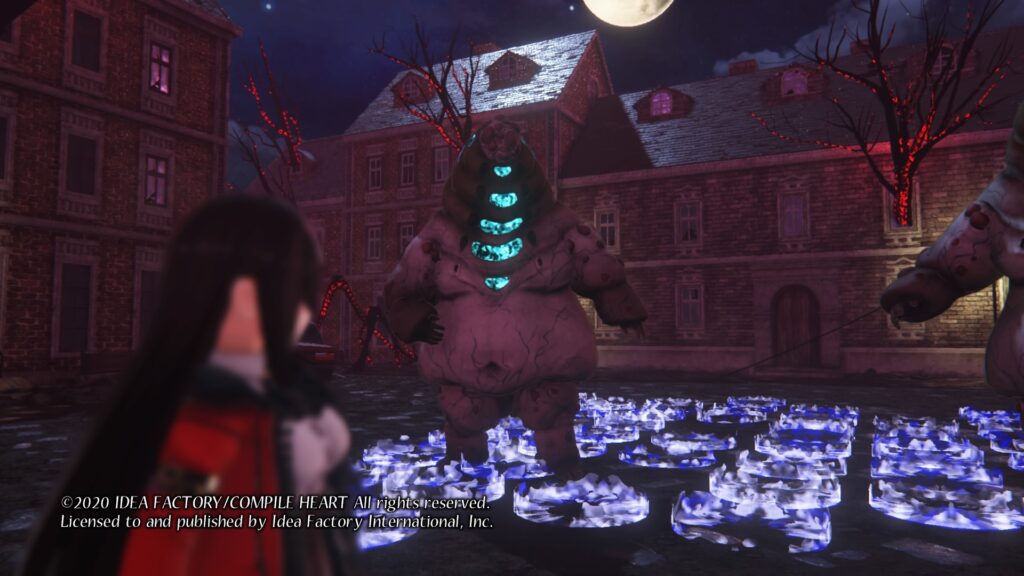
Once combat begins, you’ll find yourself in an arena-like ring with enemies and glowing circles everywhere. It’s a bit confusing at first because this is anything but your standard JRPG combat. Your goal is the same, whittle the enemies down to zero HP. However, you can move anywhere on the arena floor during your turn, and that means you can carefully position yourself at an optimum angle to enemies. Attacks often carry knockback with them as well, so getting close to an enemy and hitting them results in them flying across the screen. If they hit a wall or other enemy, they take damage. If they hit you or your companions, you get an extra Knock Blow attack doing even more damage. Sometimes a Super Knock Blow event can be triggered in the right circumstances and enemies are sent flying across the screen bouncing back and forth. It’s a unique combat system that takes a bit of getting used to and is somewhat reminiscent of a pinball machine. Each turn you get three actions in the ‘Triact’ system. Stacking them together in different ways can result in your character learning new and more powerful techniques through ‘Flash Drive’, allowing you to obliterate enemies. Attacks have attributes too, like sun, moon, and stars, and some enemies have strengths or vulnerabilities to each, making your attacks significantly stronger or weaker.
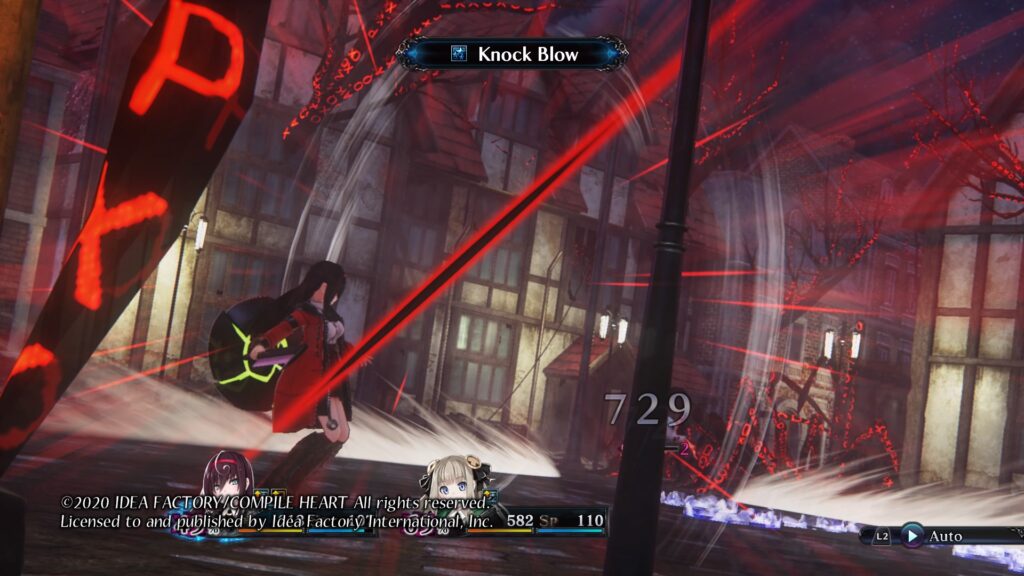
Take enough enemy damage or step on enough circles on the ground and your glitch level goes up. Hit 80% and you morph into a glitch form, making you significantly more powerful and scantily clad. Glitch forms are powerful and easy to trigger just walking around during combat. Most of the time, you won’t even need them though. Once you have a few more powerful abilities, you can align your characters just right and slaughter every enemy onscreen with a single attack, massively over-killing them and gaining bonus experience from overkills. Most combat is incredibly easy in Death end re;Quest 2, and it’s not uncommon to blow through a whole gameplay level while only sustaining minimal damage.
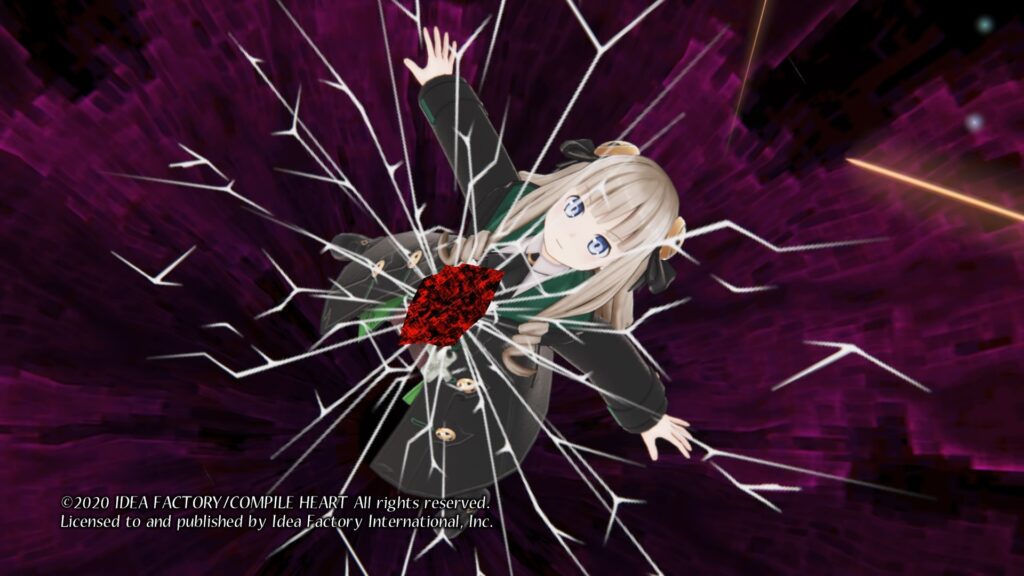
That all changes around the end of Chapter 3. The difficulty spikes abruptly after obtaining your third playable character. Enemies are a pushover until you get to a boss that literally one-shot kills your characters and can take as much as an hour to grind to dust. After that, things get tougher, with enemies becoming more and more challenging, and one hit deaths becoming more regular until the gameplay becomes a challenge, rather than the light, fluffiness that it starts out as. It’s a weird feeling to think you have a grasp on the mechanics of a game only to have them shift suddenly under you like the laws of physics suddenly changed, and it makes for a somewhat uneven experience. This is not a game you’d expect to be sweating bullets on, but survival in some areas is by the skin of your teeth, making a return to the visual novel sections a welcome respite.
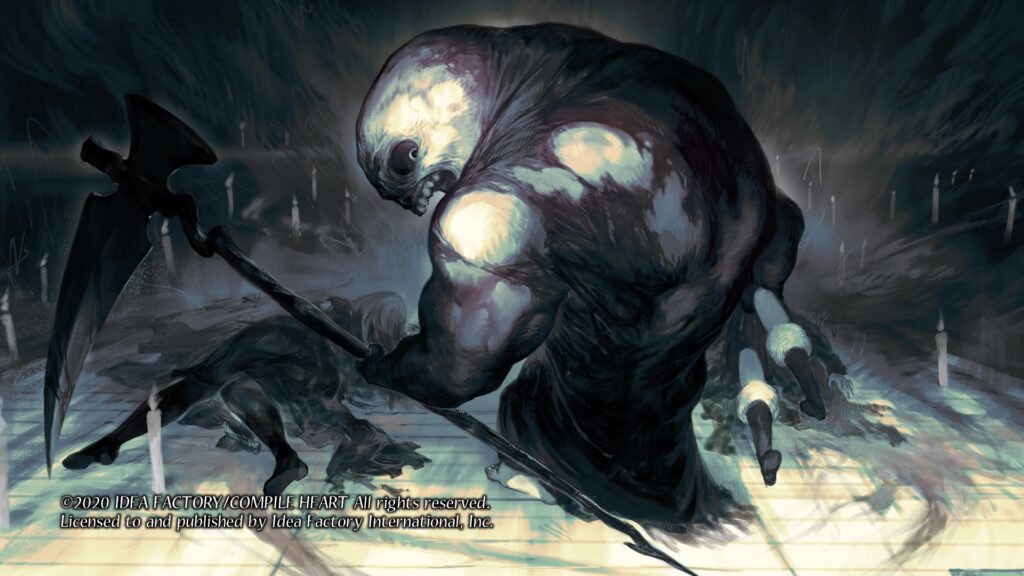
Visually, Death end re;Quest is solid in the visual novel sections, with lush characters and nice, if generic backgrounds. It’s a bit disappointing that the majority of the game only features a handful of full character portraits and supporting cast members are relegated to avatar images or no image at all, but the main characters are executed well and very well-designed, though perhaps a little too trope-like with their color conformity and slightly predictable single-dimensional personalities. The gameplay sections of the game are somewhat lackluster though, with blocky polygons, low quality textures, and weird tentacle things everywhere for no apparent reason. Main characters and most enemies look great, but they definitely don’t look as good as you’d expect for a late-gen PS4 game. Sound is equally intermittent, being used to great effect in some sections of the game and poorly in others. Not every dialogue section is voiced (which is a shame because the voice acting is excellent overall), but there are weird places where voice work is used to irritation, such as when you walk near a save point and Mai says “look, a save point” every single time, even if you just saved. It’s inconsistent and weird, and definitely a flaw in the sound design. The musical composition is excellent overall, but there aren’t enough tracks and by about halfway through the game you’re going to be absolutely sick of some of them. If there had been full voice-overs for all dialogue, this probably wouldn’t have been an issue, but with some of the unvoiced VN sections, all you hear is the background music and it’s surprisingly repetitive.
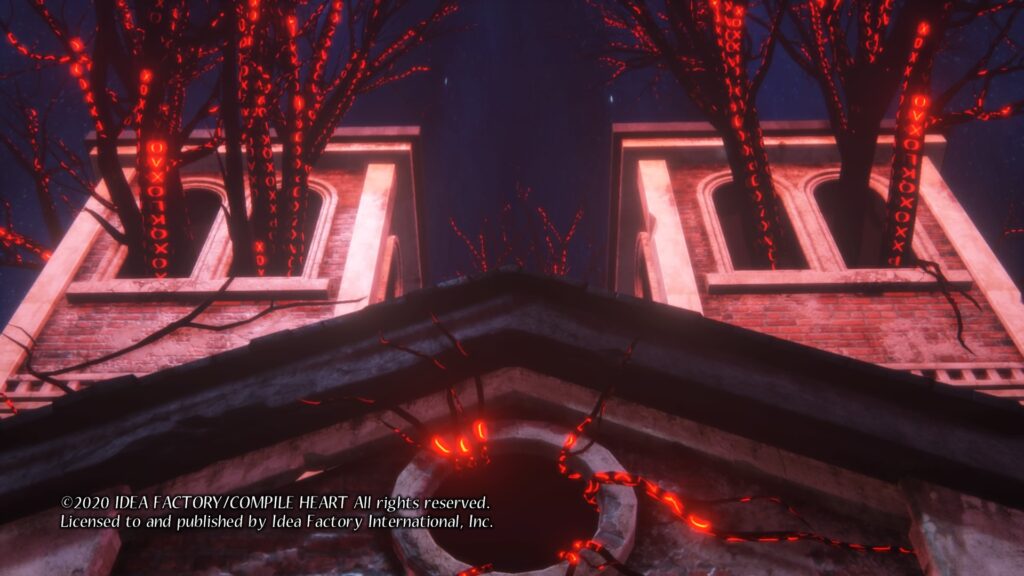
That’s the issue across the board with Death end re;Quest 2. It’s uneven. There’s no balance between sections or within them. It vacillates from horror to schoolgirl hijinx and back with weird pacing that slows the overall story. It isn’t scary as often as it should be (but when it is, it’s absolutely bone-chilling) and there’s a fair number of recurrent romantic themes that don’t seem to serve any purpose other than fan service. The gameplay is repetitive, especially in terms of level design, but the actual combat is surprisingly fun. The difficulty jumps up and down through the game, and even the sound and music choices are intermittently mismatched. Make no mistake, this is a solid game with some excellent scares, a great story, and some fun gameplay. But those things are all muted by the lack of focus that keeps the entire package from driving the narrative effectively and overall dampens the experience a bit. It’s scary, it’s cute, it’s fun, but it’s not all mixed together in quite the right proportions for the perfect recipe.
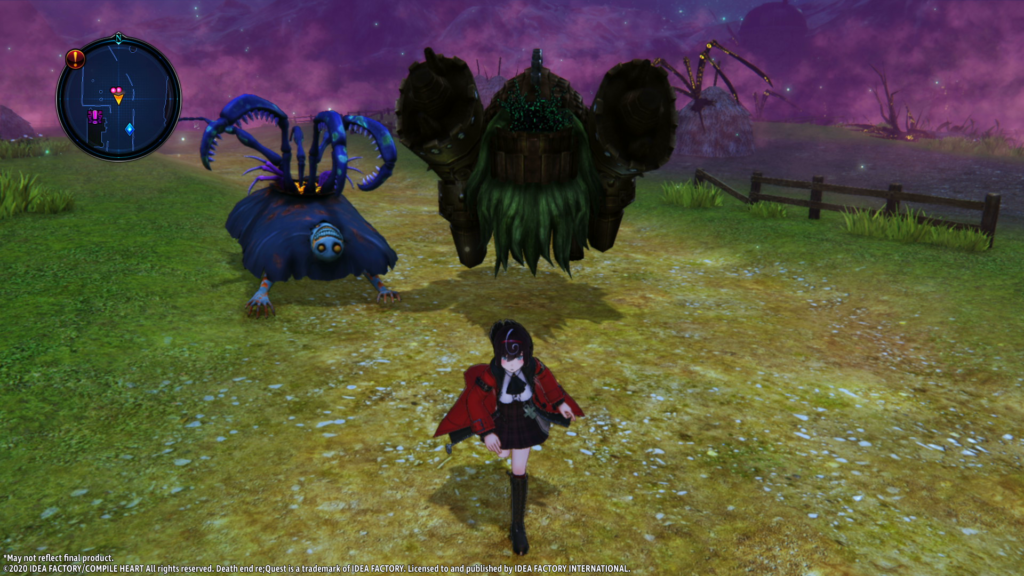
Death end re;Quest 2 is a fantastic visual novel with some excellent gameplay, memorable characters, and a compelling storyline. The entire world is fascinating, and it’s one that definitely deserves more exposure in the future. But it’s also an experience that’s tempered by pacing issues and some design flaws that lessen the full impact of the game. It’s not a short experience either, and depending on your reading skills you could easily be looking at 20 hours or more, so you’re definitely getting your money’s worth at $50. It’s not perfect, but it’s a damn good game that’s fun to play and leaves you wanting more. Mai and her friends will definitely find their way into your heart. Just try not to get it ripped out along the way!
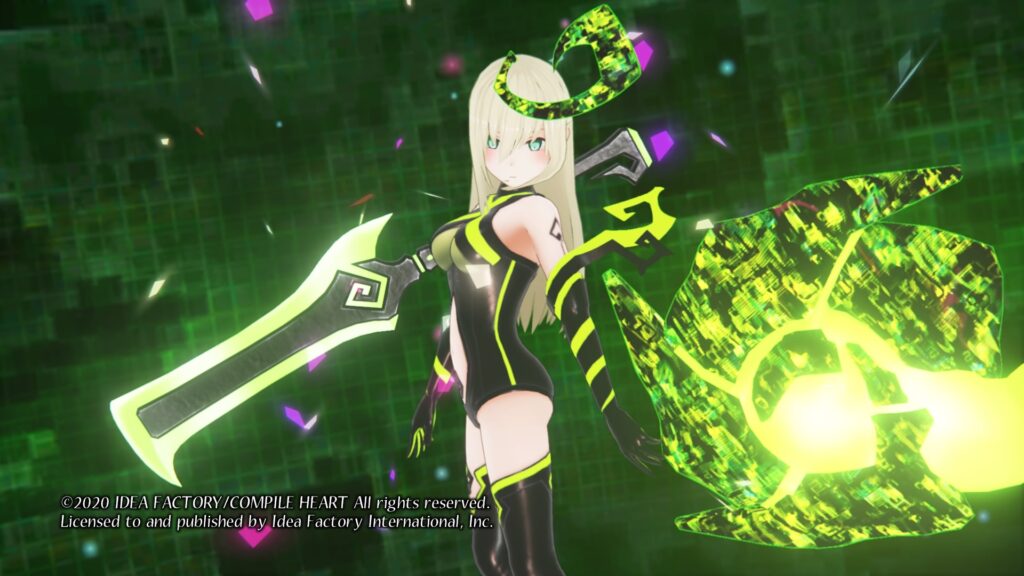
This review was based on a digital copy of Death end re;Quest 2 provided by the publisher. It was played on a PS4 Pro using a 55” Sony 1080p TV. Death end re;Quest 2 is also available on PC for Steam. Most screenshots are from actual gameplay. Dialogue screenshots are from the official website due to issues with copyright watermarking. Don’t miss this one!

